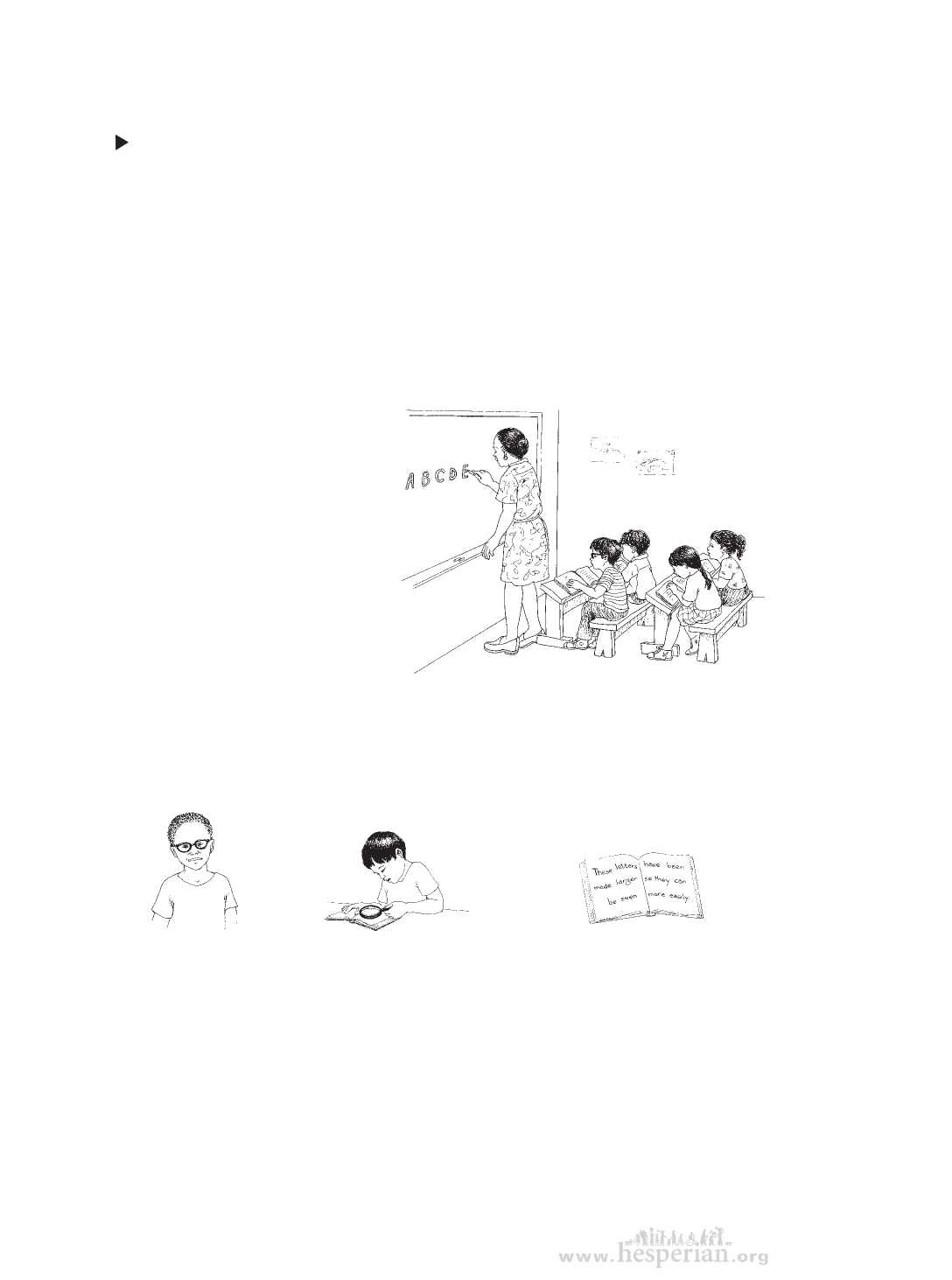
138 g e t t i n g r e a d y f o r c h i l d - c a r e a n d s c h o o l
To prepare the classroom for your child
Talk to the teacher about the classroom, and see if there are simple ways
to make the room safer and more comfortable for your child. You may
want to:
• explain how a child who is blind can bump into things and how it
helps to keep doors fully open or closed
• explain the importance of keeping things in the same place so that
your child can move around with confidence
• decide if it will be better for your child to sit in the front of the room
near the teacher
If your child can see the
letters of the alphabet, the
teacher should write on the
blackboard in large thick
letters and check often to see
if your child can see them.
Preparing to read and write
If your child can see a little, try to find out if anything would help
your child be able to see letters. If your child can see the letters of the
alphabet, he may be able to read by:
wearing glasses
using a magnifying
glass (a piece of glass
that makes small
letters look bigger)
reading large-print books
in which the letters are
bigger so they can be seen
more easily
If your child has trouble keeping up with the reading at school, you can:
• ask someone to read books and lessons aloud to him.
• ask someone to read his books into a tape recorder, so he can listen
to the books later.
• consider teaching him Braille (see page 139). This may be the best
choice if your child’s eyesight is likely to get worse.
helping children who are blind